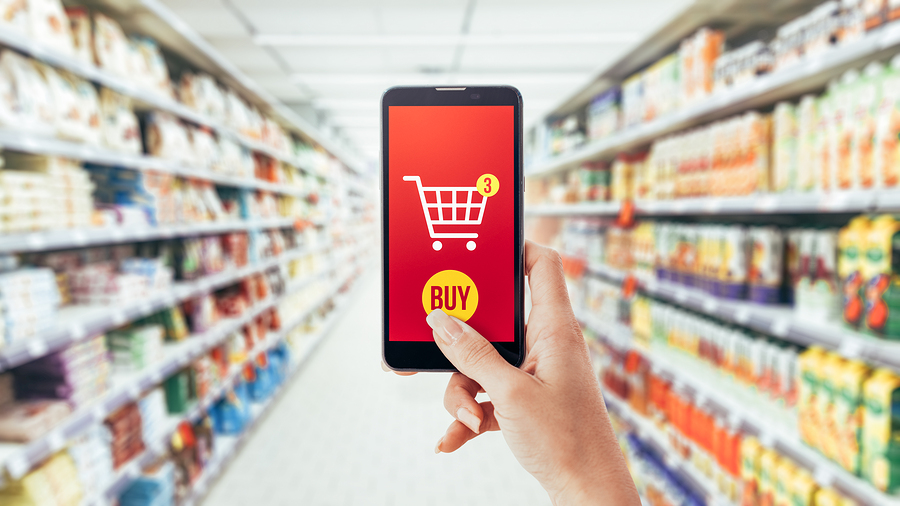
Part 1: Integrated Communications – the New Maestro of Food Marketing
November 14th, 2017 Posted by Emergent Agency Services, brand marketing, branded content, CMO, Integrated Communications, Marketing Strategy, Public Relations 0 comments on “Part 1: Integrated Communications – the New Maestro of Food Marketing”Is PR ready to move from instrument to orchestra leader?
Perhaps the harshest lesson for anyone in food and beverage marketing is the stark realization that persuasion no longer works. Persuasion was a welcome, business-friendly concept because its DNA was founded in brand-built, self-promotional messaging: here’s our product and why you should buy it.
Cultural shifts and behavior changes have transformed the shape of effective marketing from “talking at” consumers to “helping guide.” Consumers now rule the relationship – thus forcing changes in today’s marketing best practices and the service mix provided by agency partners.
Consumer shifts demand integrated communication solutions
When I first started in the agency business, public relations was primarily the sum of its media relations parts. Editorial media placement defined the marketing PR discipline, springing from its press agent roots in the post World War II rise of global agency companies. As the consumer packaged goods industry grew so did public relations. Its value exemplified in the context of cultivating third party, credible advocacy by a journalistic media source – one that was perceived to be unbiased and thus believable.
- The marketing PR theory at work then: people in all demographic segments would consume media in print and broadcast forms to engage in the content – news or entertainment – while ads revolve around the perimeter searching (again and again) for attention. Getting your product talked about in the well of content was the ultimate in “intrusive” message delivery; wearing the aura of independent, reportorial endorsement. Controlled message and frequency were never in the equation like advertising, however, extended and cost-effective reach lived within its core proposition.
Mass media lived well with mass communication strategies.
Ogilvy (I was there for 11 years), in an effort to gain greater effective traction on behalf of its consumer branded clients, built an integrated proposition called Ogilvy Orchestration. It was an effort to bring symmetry and alignment between ad, PR, promotion and direct marketing services. While the concept had merit, its execution occasionally misfired due to competition between the various operating companies jockeying for the pole position of strategic client leadership. It was an early form of integrated thinking, yet, more about creating synergy among agency disciplines than a concept built to optimize and leverage consumer behavioral insight on the client’s behalf.
Digital changed the world: the old model lost traction, and a new one arrived
Let’s start by staking a claim: integrated communications – built around consumer lifestyle relevance – is the path forward for effective brand communication.
The consumer, for the most part, is in charge of how, when and where they engage in any and all brand messaging and hence, are in control of the relationships they choose to have with brands. Hence the tools deployed might blend earned media in the form of publicity, or branded content, or social channel conversation, or influencer engagement, or improved forms of advertising built around help over hype.
There’s an old adage, if the only thing you sell is a hammer then the answer to every problem is a nail.
So true. The Internet has facilitated consumer control over media channels and consumption. So there is easy avoidance of anything that walks and talks like traditional marketing. This condition ushered in a new marketing paradigm and tool kit – a decidedly less transactional model founded in relevance to consumer lifestyle interests, passions, needs and concerns.
Along with it, the current digital media eco-system literally demands a more conversational, straightforward and authentic form of communication. I would argue that PR brains are well suited to this task given the history of focus on editorial sensibility around “educating” versus the conventional solution leaning into cinematic salesmanship.
Today, brands must become partner, coach and guide to their audience as an enabler of their lifestyle goals. It is in this method of marketing reciprocity that more meaningful relationships between brand and consumer can be formed. It begs and answers the strategic question: in what ways can the brand improve the customer’s life?
At Emergent, we appreciate the shift to mattering and deeper meaning, rather than singularly advancing product features and benefits. The mattering construct requires businesses to fully operate in the customer’s best interests – which historically was a core principle that sat underneath the value proposition of public relations.
Implications to the planning model and agency
We believe integrated communication is a fundamental requirement for effective marketing strategy. Agencies that understand and can execute this fully will remain a vital and valuable resource to clients.
That said, it requires some modifications in operating behavior from the typical PR model of fielding tactical teams of publicists and creators of editorially-sensible material.
Integrated communications involves assembling an orchestra of expertise: part management consultants, part behavioral research experts, part brand strategy planners, part creative and producers of relevant content in a variety of media forms.
So, for clients and agencies looking to leverage integrated communications in earnest, the talent mandate must answer the call for integrated thinking. Inevitably, this will redefine the skill set requirements for firms who expect to provide the highest levels of value to their clients.
Integrated thinking informs integrated plans, which leads to successful integrated execution.
In Part 2 we’ll take a closer look at the elements of the new integrated marketing tool kit.
Looking for more food for thought? Subscribe to our blog.
Bob Wheatley is the CEO of Chicago-based Emergent, the healthy living agency. Emergent provides integrated brand strategy, communications and insight solutions to national food, beverage, home and lifestyle companies. Emergent’s unique and proprietary transformation and growth focus helps organizations navigate, engage and leverage consumers’ desire for higher quality, healthier product or service experiences that mirror their desire for higher quality lifestyles. For more information, contact [email protected] and follow on Twitter @BobWheatley.




